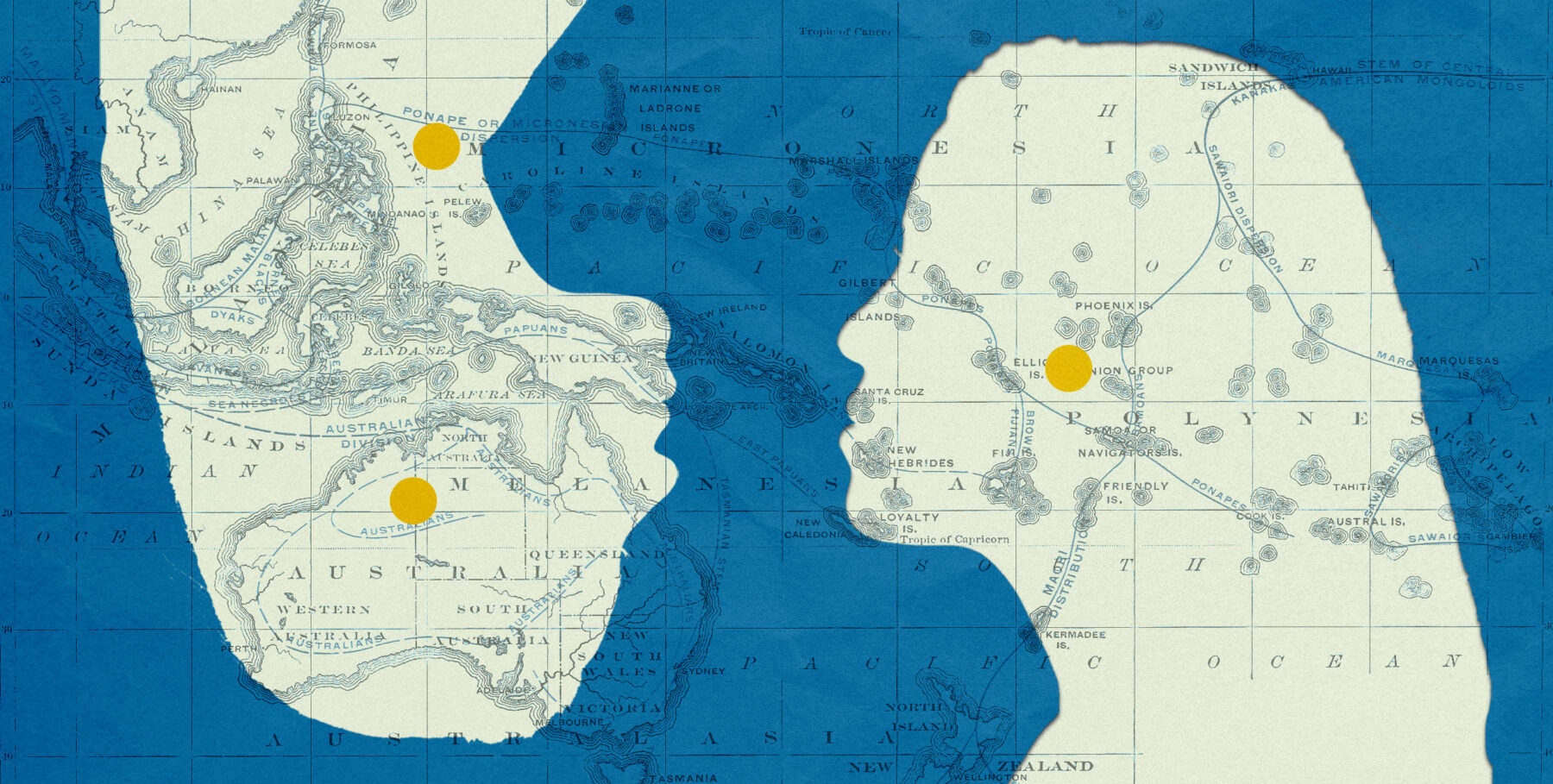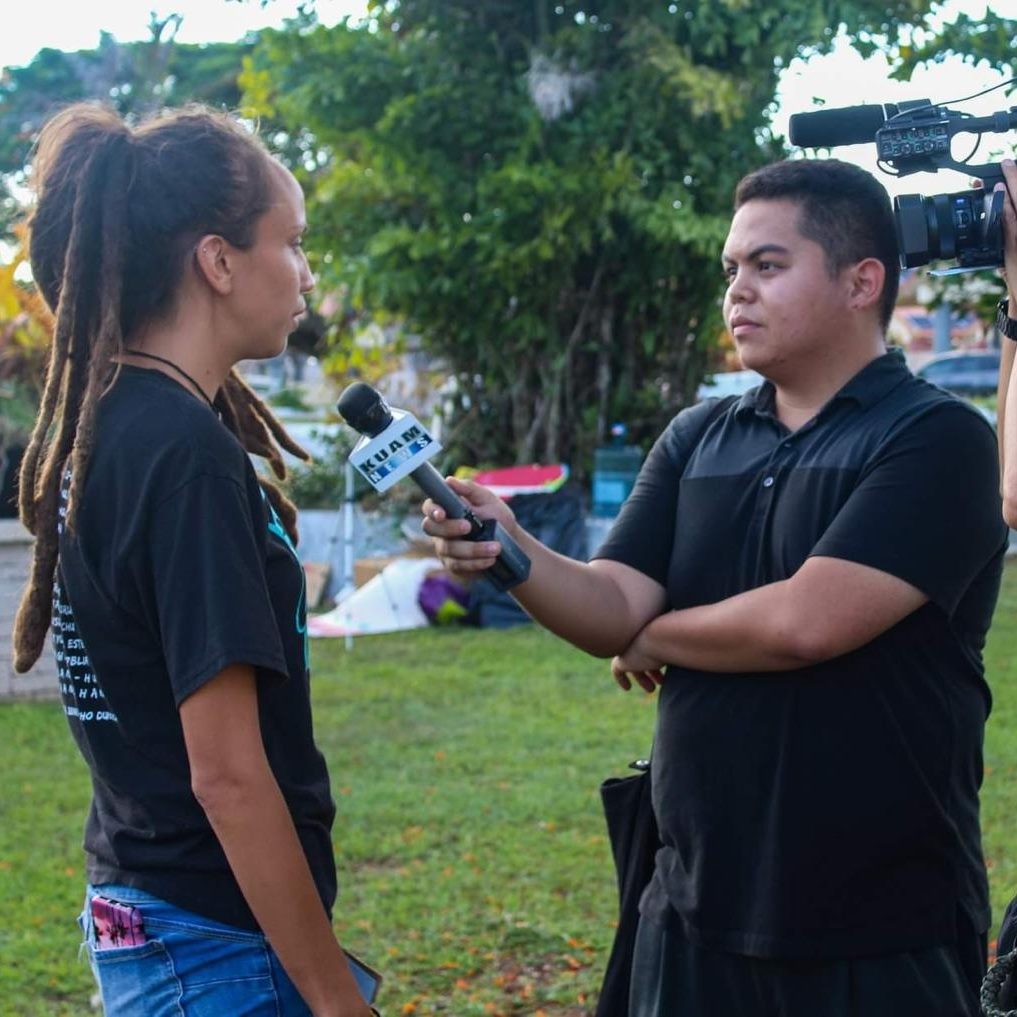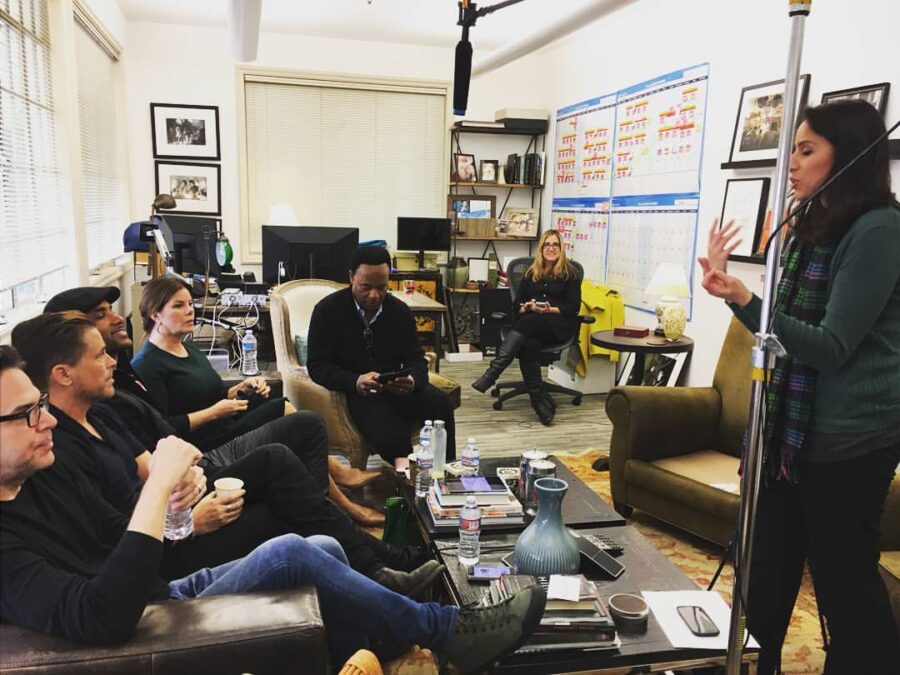
I had just started an editing job at a national outlet when news broke from my homeland of Hawai’i. After a decade of court battles and protests, construction was cleared to begin building a massive telescope on the dormant volcano of Maunakea, an ancestral burial ground sacred to Native Hawaiians’ origin story. More than 1,000 people gathered at the summit on the morning of July 17, 2019, and it was the kapuna, or elders, who laid in front of the access road. When police came to carry them away, officers looked pained; some embraced protesters. This was their community, their culture, too.
The movement around Maunakea was one of the biggest Native Hawaiian uprisings in modern history. And yet, for a moment, I paused to ask myself: As a Native Hawaiian, am I biased in thinking this is a story?
Such is the effect of so rarely seeing your community covered by the media. Pacific Islanders and our island homes rarely make the news unless there is a hurricane, a colossal wave or a volcanic eruption. And while the elements are central to our cultures, our issues run deeper than nature’s unpredictability. There are so few of us in newsrooms advocating for coverage that little attention is paid to the triumphs and challenges in our modern lives.
In the 1980s, the “Asian American” umbrella expanded to include Pacific Islanders under the label “AAPI.” This was, in part, to correct that invisibility: By banding together, people with roots in East Asia (Japan, China, Korea), Southeast Asia (Vietnam, Indonesia, the Philippines) and South Asia (India, Bangladesh, Pakistan) and those with roots in Polynesia (Hawai‘i, Sāmoa, Tahiti) Melanesia (Papua New Guinea, Fiji) and Micronesia (Guam, Northern Mariana Islands) would have more political power.
Many Pacific Islander journalists I spoke with say the term AAPI has helped remind people we exist and can sometimes serve a purpose in their work and how they identify. But it also has its limitations.
“One of my concerns is that when people hear the term AAPI, they might think that being Pacific Islander is the same as being Asian American, and they might not realize the term refers to two distinct groups of people,” said Anita Hofschneider, who is Chamorro from Saipan in the Northern Mariana Islands and is the incoming Indigenous Affairs reporter at Grist. While there are people who have both Asian and Pacific Islander ancestry, she said, the term “gives the impression that the communities are one and the same, and that the issues that they are experiencing are one and the same, but that’s often not the case.”
To better amplify what particular communities are experiencing, journalists need to be specific with language and inclusive with the issues they cover. “The term ‘AAPI’ gives the appearance of being inclusive of Pacific Islanders,” said Hofschneider. “But if Pacific Islanders are not actually represented, then it’s not inclusive.”
Why specificity matters
Accuracy is the most important value in journalism, and accuracy often involves specificity.

Terms like AAPI, AANHPI (Asian American Native Hawaiian Pacific Islander), API (Asian Pacific Islander) and APA (Asian Pacific American) are broad racial categories that encompass hundreds of languages and ethnicities and are most often used by U.S. organizations, corporations, academics and the government. You see the acronym most prevalently in May, which is national AAPI Heritage Month, when companies host events without always thinking about the diversity of who’s being celebrated. “On an AAPI panel, it will be common to include people who are Asian American and clearly represent the Asian American community,” said Hofschneider. “But then there will not be anybody who is Pacific Islander. The same goes with articles written about the AAPI community: Sometimes at the beginning, an article will reference the AAPI community, but then everybody quoted will be Asian American, and you can tell that the writer is really thinking about the Asian American community.”
As a reporter, it’s important to be clear about whom you are discussing and how people identify. People more often identify with a particular culture over a general category. Growing up in Hawai’i in the ‘80s and ‘90s, I never heard the terms Pacific Islander or AAPI. We referred to ourselves by our ethnicities (I am Native Hawaiian, Portuguese and English) or the area in which we grew up (I’m from Kalihi or “town”). Thomas Mangloña II, the chief regional correspondent for KUAM News in Guam, said in the Northern Mariana Islands people are identified by the island they came from (he’s from Rota). “Only until I went to college in California, I identified as Pacific Islander,” he said.
Asking how someone identifies helps you avoid overgeneralizing and inaccuracies. For instance, just because someone lives in Hawai’i doesn’t make them Native Hawaiian — Native Hawaiians (Kanaka Maoli) are indigenous to the land, with ancestral ties that go back pre-1778 European contact. The same goes for Indigenous people on other Pacific Islands. There is also a growing movement around using the word Pasifika to describe Indigenous Pacific Islanders — a term that is New Zealand in origin and centers the population, unlike “Pacific,” which was named by a European colonizer.
Specificity, or disaggregation, is also important when it comes to reporting on data. Health, economic, education and employment disparities are vastly different among Asian Americans and Pacific Islanders, not to mention ethnicities under those labels. For example, in March 2021, Native Hawaiians and Pacific Islanders had the highest per capita Covid death rate in 18 of the 20 U.S. states reporting their deaths; Asians, meanwhile, reported the lowest per capita Covid death rate among racial groups.
Thankfully, disaggregated data is becoming easier to access. The U.S. Office of Management and Budget directs agencies to separate out Native Hawaiians and other Pacific Islanders from Asian Americans in federal data, and states like California and New York disaggregate data further by ethnicity. “Sometimes journalists will be actually surprised to see what they can find specifically about the Pacific community,” Hofschneider said.
When it’s OK to use umbrella terms
Striving for detail and context is always the journalistic ideal, and there are still instances when the term AAPI is most accurate — like when describing political groups and advocates for the entire community.
It can also be helpful in newsgathering. “When you are an AAPI journalist, it’s great to use the umbrella term in order to connect to the community that you’re reporting on and are also a part of,” said Jessica Hilo, NBC’s senior manager of social programming and specials. “It helps you gain entry and fast track your conversations with sources. And it lets people know that, to a certain extent, you’re an advocate for that community because you’re part of that community. You’re not an outsider.”
Hilo is Native Hawaiian, but growing up in the Bay Area, it was hard to find others who looked like herself. “I often gravitated toward other Pacific Islanders,” she said. “So for me, that umbrella felt very comfortable and felt like home.”

She said that while journalists should disaggregate data and be specific in their reporting, she is worried that completely dismantling the AAPI umbrella could lead to Pacific Islanders not being covered at all. The answer, she said, is advocating for each other in spaces where we’re left out. “I would like to see us championing each other, rather than feeling like there’s a limited amount of space for Asian Americans and Pacific Islanders,” she said. Even with Native Hawaiians, “I do feel like we carry a little bit of the responsibility and the torch for the lesser known Pacific islands.”
Pacific Islanders have a lot of history that unites us — from the long-felt effects of colonialism to our respect of the land and ocean. Sera Tikotikovatu-Sefeti, an I-Taukei (Indigenous Fijian) who works for Islands Business magazine in the region, said Pacific Island stories overlap.
“In Fiji, for instance, we have Tongans, we have Samoans, we have Cooks, we have all of these other Pacific Island regions that have a little bit of story related to Fiji — how our ancestors came to their land and our shared knowledge,” she said. “We’re known for our adventurous side, going out and learning from each other.”
All of the Pacific Islander journalists I spoke with insisted we lean into our shared histories. “One of my favorite poets, Terisa Siagatonu, says if you look at any map of the world, it splits the Pacific in half,” said Mangloña. “And so we need to put that map together and let people know that we’re actually at the center.’”
How to better include Pacific Islanders in stories
To outsiders, islands in the Pacific often conjure imagery of barely inhabited vacation spots, sprinkled with smiley dancing girls and shirtless fire-throwing men. Hollywood and the media are much to blame. If our communities were regularly included in stories or covered at all, there’d be less exoticism and mystery around our cultures.
While the effects of climate change in the Pacific do make the news from time to time, they are usually “science” stories, with journalists parachuting in to observe the rising sea levels or perishing coral reefs without addressing the people living there. “Often, there’s no real in-depth story about what they feel and the real challenges that they’re facing in their daily lives,” said Tikotikovatu-Sefeti. “We’re very resilient people, and we have our own culture that practices sustainability.”
Hilo said the stories she often reads about Hawai’i “are not for the Hawaiian audience, they’re for a white audience that thinks it needs to know about Hawai’i in a particular way.” If journalists are not talking to people living in these places, affected by these news events, then they aren’t telling the full story.

Hofschneider said the media needs to include the voices of Pacific communities when they’re talking about things like the U.S. expanding its military presence or China expanding its economic interests in the Pacific. “When you read those stories, and you don’t hear Pacific Islander voices, you can be under the impression that maybe nobody’s living on those islands, or nobody is being affected. But, in fact, there’s a lot of indigenous people who are out there.”
For journalists living in the Pacific, getting U.S. and international media to understand the value of covering their communities has had mixed results. Tikotikovatu-Sefeti said her pitches have been accepted at Australian outlets, where there is a stronger connection to the Pacific, and believes international media should rely on local reporters more to tell stories in regions they’re less familiar with. “It’s extremely important that our locals tell their own stories, because our people are really that much more comfortable sharing their story with somebody that they know, that they can relate to,” she said.
Mangloña said he often gets pushback when he pitches Pacific stories to U.S. outlets. Editors “use coded language: ‘Who’s this going to resonate with? Is this something that can be shared and universal?’” he said. “But whose experience is universal anyway?”
After grad school at Stanford, Mangloña moved back to the Northern Marianas. “I couldn’t see myself anywhere but home,” he said. He wanted to tell stories about his Indigenous community and the islands they come from. “I couldn’t tell it with the detail I wanted to as a journalist in larger newsrooms in the continental U.S.,” he said. “I just found it really difficult to paint a more complicated picture of my community.”
For these reasons and more, I have learned to better embrace my seat at the table in recent years. It has only become clearer since the Maunakea story that if I can’t advocate for Pacific coverage in newsrooms, I’m not sure who else will.


